Bangkok's best soft-serve ice-cream flavors
While Cha Tra Mue's new Thai tea soft serve is stealing all the headlines, it's by no means the only flavor we have a soft spot for.
A cornerstone of Japanese cuisine decadence is all the premium wagyu beef. Here, we’ve rounded up some of the prettiest, fanciest Japanese beef dishes available in Singapore, for you to check off your list. From simply slide yakiniku platters to fussed-over small plates, here are the ones we’re salivating over.

Get it at: Wagyu kaiseki specialist Ushidoki, which sources its wagyu from Miyazaki prefecture
Ushidoki chef Nobuaki usually starts his kaiseki menus with a cold dish, and if you’re lucky it will be the oyster and beef sashimi. Each plate comprises a creamy French oyster topped with marinated beef and Spanish olive oil capsules. The dish is also decorated with Japanese maple leaves.

Get it at: Fat Cow, the self-professed “meat atelier” run by handsome young chef Fukashi Adachi
Like what you see? The Bite! Japan website and Facebook page are both packed with Singapore's best places to try Japanese food, the best of Japanese sake, whisky and craft beer, upcoming promotions and lots more. Follow us!

Get it at: Vivocity’s yakiniku specialist Tajimaya, whose fancy exhaust fans ensure you leave without smoke in your hair
Miyazaki Beef comes from Japanese black cattle bred and fattened in Miyazaki prefecture, where the warm climate and lush countryside are well suited to producing high quality beef. All Miyazaki beef is Grade 4 or above according to the meat quality grading standards. To enjoy the meat’s exquisite marbling (Tajimaya uses meat with a score of 7 to 8), Chef Michael Teng recommends the tenderloin cut.

Get it at: Duxton Road’s Niku Katsumata, which imports its high quality beef from Kagoshima and Kumamoto.
Some might be hesitant about raw beef but Taiki’s careful handling of the meats is comforting. The cut of meat used for the wagyu tartare changes from time to time but the rump cut gives a good bite. It is marinated in shoyu then topped with a quail egg yolk, some caviar and spring onions. The sashimi features inner thigh meat, whose sweetness comes through with each bite.

Get it at: Yakiniquest, a sexy but zen yakiniku restaurant that specializes in omakase-style barbecue
Niku Somen—raw wagyu sliced into thin “noodles”—is a top pick here. It is a light refreshing dish, with delicate flavors. Served in a small teardrop shaped bowl, the fine beef strips are doused in light dashi, matched with seaweed, grated yam and spring onions and served with a side of wasabi. The dish is an appetizer in the special omakase.

Get it at: Mandarin Gallery’s Ito-Kacho, whose amazing yakiniku offerings always involve using chilled—not frozen—meats
Air-flown in from Kagoshima, Kyushu, Japanese black wagyu is a top quality beef from cattle exclusively bred and fed a nutritious diet to achieve smooth meat texture. The lower melting point of their fat content gives rise to a finer marbling consistency, which makes the meat more robust in flavor. Get the ribeye cut, where balanced fat content allows you to taste the meat better.

Get it at: Tenkaichi, which not only has views of Marina Bay, it offers a best-price guarantee, offering to beat any similar buffet by 10 percent.
Wagyu tokujo karubi is a grade A5 finely marbled black cattle wagyu from Miyazaki prefecture, which offers an exquisite balance between meat and fattiness. Superbly tender and nuanced with clean and concentrated flavors and a near buttery texture, the beef is best enjoyed very lightly grilled.

Get it at: Osaka Kitchen, a local outpost of the well-known teppanyaki chain in Japan,
Grilled on the teppan until seared on the outside yet pinkish and tender on the inside, the ohmi wagyu beef steak is served with slices of fried garlic from Aomori, Tohoku, wasabi, mojio (seaweed salt) and daikon. Hideshi recommends eating the beef cubes with a smear of wasabi and topped with a slice of fried garlic and a sprinkling of mojio. Clean your palate with the daikon and then dig into another piece.

Get it at: French-Japanese fine dining establishment Lewin Terrace, housed in a beautiful white mansion in Fort Canning Park
Normal shabu shabu sees diners swishing pieces of thin-cut beef in hot broth. In order not to lose the meats’ fat and flavor into the broth, Matsumoto thought to use a siphon to extract the flavors of the vegetables into the bonito broth before pouring it over the thinly sliced Kagoshima Wagyu. To cut through the combined umami of broth and beef, he adds some Japanese mountain vegetables and wasabi gnocchi made using a special wasabi essence.
Plenty more where that came from. For more content on the best Japanese food in Singapore and regular updates, follow Bite! Japan on Facebook.
Advertisement
If you want to have a taste of opulence and luxury, look no further than Sentosa and Harbourfront. Boasting unparalleled seaside ambiance, these four restaurants are out to provide some great familiar Cantonese flavor with ultra-chic touches, Michellin-star quality food and service and more.
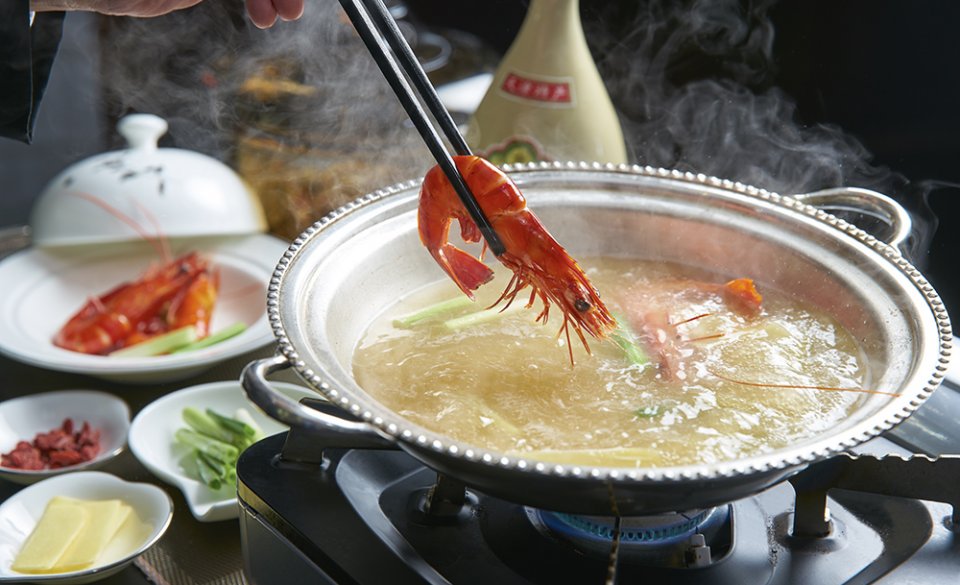
When it comes to lavish, banquet-style Cantonese restaurants, it doesn’t get more glam than Cassia at the ultra-chic Capella. Think ornamental lamps, gorgeous screens with floral motifs and beautiful windows. Pair that with delicate, contemporary plating, and you have a spot that’s as appropriate for a date as it is a family reunion. Chef Lee Hiu Ngai’s signatures like the M9 wagyu with black pepper sauce and the baked lobster aside, try the baked fortune chicken, the live drunken prawns and the doubleboiled spare ribs soup. There’s an affordable dim sum menu on the weekends, too. G/F Capella Singapore, 1 The Knolls.

The more “casual” of his two Singapore outposts, L’Atelier de Joël Robuchon has the same distinctive red and black decor as the others around the world. Opt for the eight-course Discovery menu, which brings a seemingly endless procession of dishes, including highlights like the signature amuse bouche of foie gras custard with red port wine and Parmesan foam, the decadent Imperial caviar and sea urchin, tender jelly of dashi topped with broccoli cream, and the unimaginably smooth and creamy mash potato. Or opt for a smaller four-course Menu Appetit that you can create out of a list of dishes. Resorts World Sentosa, Hotel Michael, 8 Sentosa Gateway.

The focus at Skirt may be squarely on premium meats grilled to perfection on the centerpiece South American parilla grill, but this ain’t no Old World steakhouse. With floor to ceiling windows, curved high-backed sofa seating and dramatic and sculptural lamps hanging from the ceiling, the space is quite glamorous. Black Angus, various wagyus and other delectable meats aside, there is also sustainably sourced seafood, duck confit, lamb shank and other meaty delights, not to mention some lovely starters like ceviche and crab salad. W Singapore - Sentosa Cove, 21 Ocean Way.

Thai restaurants in Singapore are a firm fixture, but none come close to the gorgeous overall experience and delicious food Tamarind Hill has to offer. The setting—a historic colonial mansion at Labrador Park with Asian inspired decor and lush foliage—feels like a high-end tropical resort in Thailand. The menu covers your familiar salads and curries, but in an elevated way, and even throws in some interesting, hard-to-find dishes like relishes from Chef Wanthana’s native Northeast, like the shrimp paste relish with green mango and even five variations on the papaya salad, including one with wagyu beef. 30 Labrador Villa Rd.
Advertisement
Easily Singapore’s most exhaustive and high-quality japanese food enclave, Japan Food Town at Wisma Atria brings together some of Japan’s most lauded restaurants, some with histories going back over 100 years, to bring Singapore the best udon, ramen, soba, mackerel, nabe and other specialties. But without a good guide, it’s easy to feel bewildered. Use this, and we’re sure you will keep coming back for more.

A famous authentic tonkatsu restaurant in Ginza, Tokyo, Anzu makes its first foray to Southeast Asia with fresh Kyushu produce and, for their signature light and crispy breaded pork cutlet, high quality oil at temperatures of 180-200°C.
Get this: The Anzu Set comes with three types of katsu: a daily changing pork cut, shrimp ball, and a vegetable variety—and chawanmushi and dessert.

Bar Nippon is Singapore’s first bar that specializes in fruit cocktails. The menu is thought up by Japanese mixologist Mizusawa Yasuhiko, who is renowned for concocting fruit-based cocktails at Bar Tiare in Tokyo. Here, the drinks are churned out by Hirofumi Yamamoto, who trained under Mr Yasuhiko for four years. As the bar only works with fresh, quality seasonal fruits like pineapples from Okinawa, red melons from Hokkaido, and Kyoho grapes, the menu changes every three to four months.
Get this: Featuring the sweet and juicy red melon from Furano Hokkaido, the melon cocktail also gets a dash of unfiltered Nigori sake, Advocaat, plus a house-made dashi syrup derived from seaweed, bonito and wasanbon Japanese brown sugar.

Rice takes center stage here. There is a dedicated rice sommelier, and only top quality kinmemai rice is used in the dishes here, including their signature onigiri that can be ordered for takeaway. The restaurant even uses bamboo charcoal to purify the water that they use to cook the rice.
Get this: What’s not to love about grilled freshwater eel with a special sweet-savory tare in the unagi kabayaki don? The unagi is served atop a bowl of rice and then topped with shichimi and white pepper, giving the dish a spicy kick.

Serving up delicious dishes prepared with this plethora of fresh seafood, quality beef, vegetables and dairy, Hokkaido Izakaya is the best place to sample a taste of the island without flying there physically. The Japan Food Town outlet is the second in Singapore, attesting to the popularity of Hokkaido fare.
Get this: The kakiage tempura soba arrives with a massive piece of kakiage studded with vegetables and prawns, covering up half of the already huge bowl of fresh soba noodles.
With a 150-year history, this Japanese udon specialist does special, handmade, thin udon noodles that take four days to prepare. Try them in their purest form, cold, with little more than two types of tare: soy sauce and goma. Udon aside, there is also a selection of sake to go with, and standard izakaya fare.
Get this: Bring a big appetite for this ultumate udon tasting: Tempura and Ajikurabe. You’ll get some cold udon, some hot udon in soup, served alongside two types of tare.
A local outpost of the well-known teppanyaki chain in Japan. Osaka Kitchen specializes in the cuisine of the Kansai region. Expect a variety of okonomiyaki and yakisoba, and there is even a seasonal eight-course chef’s menu The bar counter takes centerstage, where you can watch the chefs work their magic on the teppan.
Get this: This straightforward Japanese omelet with pork belly might feature rather simple ingredients but it showcases the teppan skills of chef Hideshi, cooking the egg that envelops the springy meat until suitably soft.
First opened in Ebisu, Tokyo in 1998, Rang Mang Shokudo has taken karaage to an art form. The fried chicken specialists use only carefully sourced free-range chickens and marinate them in a buttermilk bath for at least six hours to lock in the flavors in the meat. After coating the mean with batter made from top quality flour, Rang Mang Shokudo uses a signature double-frying, low-heat method for perfect crispiness.
Get this: Fried chicken overs should get the All-You-Can-Eat set, which lasts for 60 minutes, at just $48, and includes free-flow alcohol. Diners can choose five dipping flavors—out of a selection of 13—to accompany their heap of chicken.
Like what you see? The Bite! Japan website and Facebook page are both packed with Singapore's best places to try Japanese food, the best of Japanese sake, whisky and craft beer, upcoming promotions and lots more. Follow us!
Japan Food Town’s casual and bustling ramen specialist from Kanagawa prefecture does “home-style” ramen made to your specifications—choose how well-done you like your noodles, though note they make them nice and thick, fresh. Broth-wise, they run the gamut: shoyu, tonkotsu, shio, spicy miso and even a tonkotsu-shoyu mix.
Get this: The rich, Yokohama-style tonkotsu sio cha-shu ramen also comes with spinash, nori and quail egg.
Tokyo’s two Michelin-starred Seizan restaurant as a little modest omakase restaurant in Japan Food Town, specializing in nabe, or Japanese hotpot. Young chef Haruhiko Yamamoto worked at the Tokyo restaurant for five years before coming to Singapore and serves just one set for lunch and one for dinner.
Get this: Choose from three mains, such as the wagyu mabushi, the sea bream rice set and the start of the place, the wagyu nabe dashi. It comes with appetizers and dessert.
Decked in inviting shades of blue, the restaurant in Wisma Atria’s Japan Food Town is designed to resemble an English fish and chips shop, complete with informative murals detailing facts about saba fish, or mackerel, the place’s specialty. Sabar sources its premium fish from Aomori, Tohoku and offers them as sushi, sashimi, grilled, fried and even a la fish and chips.
Get this: The assorted toro saba sushi platter comes with three different types of sushi: shimesaba, where the mackerel is cured with salt and vinegar to give it a slight tang; torched aburi-style and with kombu seaweed for added umami; and grilled with a special marinade.
This restaurant has its roots in Hyogo prefecture, and the semi-buffet meals come with quality meats from Japan and Australia, as well as free-flow vegetables and home-made ice cream. Enjoy two Japanese hot pot styles—shabu shabu and sukiyaki. The restaurant also offers six different kinds of soup stock for their shabu shabu.
Get this: The deluxe Gyujin Course Shabu Shabu comes with Hokkaido wagyu beef chuck cut, pork ribs, pork loin, and chicken thigh meat. The restaurant also provides three different sauces to pair with the meats: ponzu, gomadare (sesame), and spicy gomadare.

This tempura specialist is small and warmly lit, with many little Japanese accents and an open kitchen. The menu here might be compact, with only four rice bowl options, but diners can choose to add on individual tempuras to their sets. To wash down your meal, the concise drinks menu features a selection of sake, Suntory whiskey highball and $8 half-pint Kirin draught beer.
Get this: The Tenka Special Tendon comprises three prawn tempuras, two regular vegetables, two seasonal seafood items—featured here are squid and yellowtail, and two seasonal vegetable items—zucchini and myoga (young ginger). The accompanying sauce is deliberately kept only moderately sweet.
The dining outfit is headed by executive chef Kawashima Eisaku, who trained under master chef Nanmoku Shinichi for 16 years at the flagship outlet of the same name located at Tsukiji. In the three decades that Takewaka has been at what is arguably the world’s most famous fish market, the team has forged a tight network with the local fishermen, suppliers, and wholesalers, affording the chefs access to some of the finest quality seafood.
Get this: Using wild caught saury directly shipped in from Hokkaido to preserve its freshness, Takewaka delicately grills the fish and prepares it in the form of traditional Edo-style sushi.
With 45 years of experience in authentic yakiniku, Heijoen prides itself on being beef connoisseurs. The highlight of the menu has to be the deluxe cuts of A5 Wagyu Beef directly imported from Kagoshima, but don’t be surprised to also find some Korean staples like kimchi, namul, or bibimbap on the menu.
Get this: The Housen assortment of premium beef in the Housen platter includes salted tongue, deluxe Heijoen lean beef, the premium cut of the day, chef’s choice steak cut, sirloin and premium Sankaku marbled meat.

This Tokyo soba eatery uses a mix of buckwheat flour from Yamanashi, Tochigi and Hokkaido for its made-fresh-daily noodles. To cater to local tastes, the soba noodles are rolled out thinner than in Japan, so that it becomes slightly softer when cooked. Yomoda Soba believes in healthy eating and uses no MSG in their food preparation. All dashi broths are made with natural ingredients.
Get this: The hot ebi tempura soba comes with five pieces of crispy and rich prawn tempura together with soba noodles and a simple dashi broth.
Advertisement
Newbies to the sublime realms of sushi and sashimi may be surprised to note that while tuna is among the top-grade options out there, there are actually over a half-dozen varieties of tuna, or maguro, eaten in Japanese cuisine. Before you head down to your next omakase, learn the difference between the main varieties, and a bit about the best cuts.
Even if you don’t know much about tuna, the arrival of donburi hot spot Kuro Maguro at Tanjong Pagar Centre has probably taught you that its star fish, the bluefin tuna, also known as kuro maguro and hon maguro, is the most prized of them all. It’s the fish you hear of selling for millions at Tsukiji auctions, thanks in part to its unbeatable combination of umami, acidity and amazing texture.
And while wild hon maguro caught around the seas of Japan, Ireland, Canada and the Mediterranean, the majority of bluefin tuna in Singapore comes from Japan.
Far from a supermarket sushi fish, the intensely red hon maguro is served raw, in sashimi form, never cooked, as that would compromise the meat’s natural meaty firmness. Hon maguro tends to be at its best in the cold months, when it packs plenty of that delicious, melt-in-your-mouth fat.
Bigeye tuna or mebachi maguro is also known as ahi, and is the next best thing. Mebachi lives deep in the ocean and therefore has plenty of fat, too, making it a good option for affordable sashimi. It’s relatively abundant in most tropical and temperate seas, so tends to be cheaper—you’ll probably also encounter it in supermarkets. Much of the mebachi maguro in Singapore comes fresh from Indonesia.
Not to be confused with yellowtail—known as Hamachi in Japanese—yellowfin tuna, or kihada maguro (strangely also known as as ahi in Hawaii), is a tropical fish, less fatty than hon maguro or mebachi maguro. While high-quality kihada maguro is good eaten as sashimi, it’s also common to find it seared and served rare.
Like what you see? The Bite! Japan website and Facebook page are both packed with Singapore's best places to try Japanese food, the best of Japanese sake, whisky and craft beer, upcoming promotions and lots more. Follow us!

Kuro Maguro
Types of tuna aside, there is a bunch of Japanese terminology for the various cuts of the tuna fish—which you will want to know as you explore the various breeds and fat contents.
The leanest part of the tuna fish—and usually the reddest—is called akami, and refers to the top part of the fish, just under the dorsal fin. Those simple tuna maki rolls with bright red fish in the middle? That’s akami.
Toro refers to the fatty—and more prized—part of the fish. You’ll want to know the two sub-varieties: chutoro is a medium-fatty cut that comes from the belly, is more pink than red and can have a slight marbling akin to beef. Otoro is the primo stuff, from the fattiest part of the belly, which melts on the tongue. It also happens to be packed with nutrients like omega-3 fatty acids. Naturally, not all otoro is the same—otoro from kihada maguro, for example, is not very fatty at all. The real prize is—you guessed it—otoro from hon maguro.

Sushi Mitsuya
Singapore has plenty of excellent, high-end sushi restaurants that will serve the best cuts of seasonal tuna. There are two, however, that specialize in tuna. The aforementioned donburi specialist Kuro Maguro brings its fish straight from the trawler, bypassing the market auction process, ensuring that the fish is fresh and as affordable as possible. Its sister restaurant at Suntec’s Eat at Seven, Maguro Donya, is also supplied by Misaki Megumi Suisan, and flies in fresh sashimi-grade fish daily.
At Anson Road's Kan Sushi, chef Nishina serves a Hokkaido kaisendon, featuring the freshest catch from Japan's most delicious island, everything from scallops to sea urchin to, you guessed it, maguro. And for something even more indulgent, try the chirashi teishoku at Marina Bay Financial Centre's Misaki, a 10-seafood extravaganza atop fluffy koshihikari rice, including shrimp, tobiko, crab claw, maguro and otoro.
For an ultra-luscious and decadent otoro dish, head to Sushi Mitsuya, where chef Ryosuke Harada lightly drapes a slice of fatty maguro belly around a miso-cured egg yolk for double the umami delight.
Plenty more where that came from. For more content on the best Japanese food in Singapore and regular updates, follow Bite! Japan on Facebook.
Advertisement
Dempsey Hill and Tanglin aren't the first places you think of when you wanna hit a hot new restaurant, but there's something about the wide roads, the grassy knolls and the wide skies that makes the area perfect for when you want to get away from the trends and just enjoy a solid (if pricey) meal out. Here are the best places to do it.
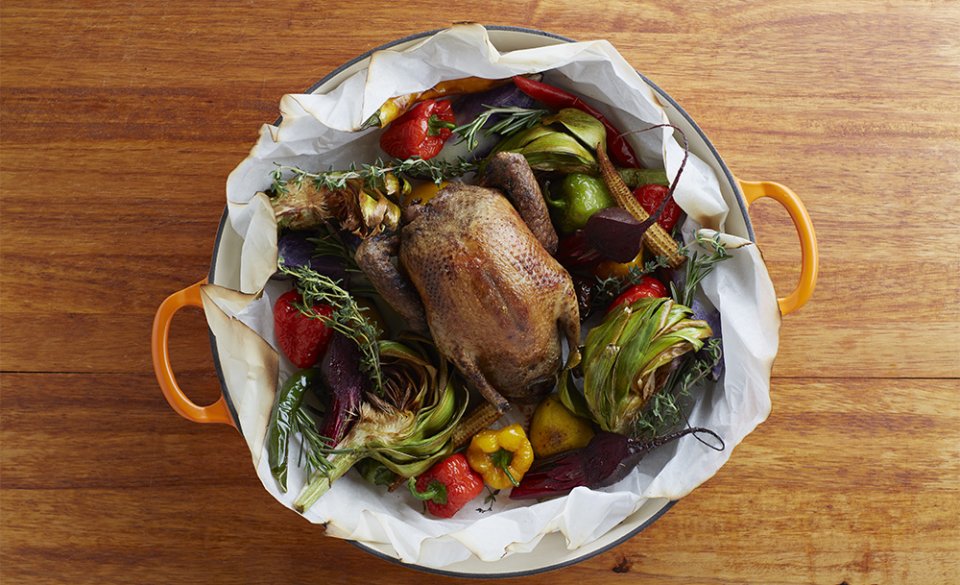
Under the guidance of northern Italian chef Luca Becalli, the swish and swank Basilico offers both a warm and inviting atmosphere, as well as delicious food options that are both upscale and comforting. The buffet options feature a dazzling display of antipasti, live stations, as well as wonderful desserts, and their wine and cheese nights are legendary. On the a la carte front, familiar Italian formats are executed with interesting and seasonal combos, as in the Hokkaido scallop with eggplant puree and anchovy sauce, and the cod fish fillet with onion puree, polenta and baby beetroots. 2/F The Regent Singapore, 1 Cuscaden Rd. Make a reservation via Chope here.
Millenial foodies and their parents alike will agree that Blu Kouzina is arguably the best Greek restaurant in town. We held our breaths when the institution moved from its home on Bukit Timah to Dempsey Hill, but the new space (Cycladic blue and white color scheme intact, of course) has only enhanced the delight of their staple mezedes like the taramasalata (cod roe salad) and keftedes (beef meatballs with tzatziki sauce), as well as mains like the juicy souvlaki and mousaka. The menu at this family-run place offers few surprises, but the perfect execution and touches like the the organic extra virgin olive oil from Messinea and the ouzo digestifs make it a wonderful experience. #01-21, 10 Dempsey Rd. Make a reservation via Chope here.
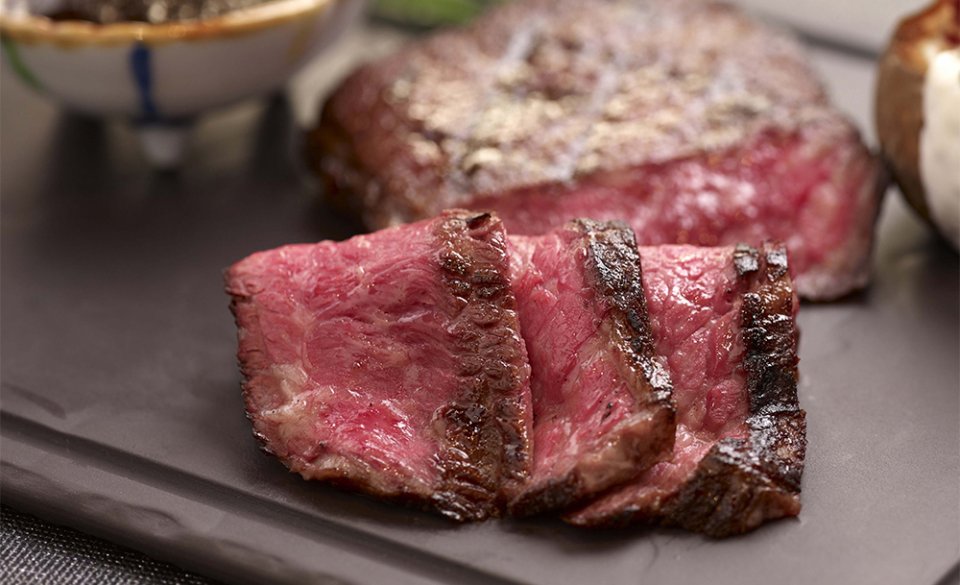
The brief and high-quality lunch and dinner menus at this “meat atelier” are a joy for carnivores. Walk in through the shoji doors, grab a seat at the centerpiece U-shaped counter and prepare to be delighted by a selection of premium wagyu from several Japanese prefectures. To go with are equally delightful starters like the seafood-stuffed fried zucchini blossoms and the crab cakes with pickles. At lunchtime, there are affordable sets covering sushi, sashimi and donburi, too. #01-01/02 Camden Medical Centre, 1 Orchard Blvd.
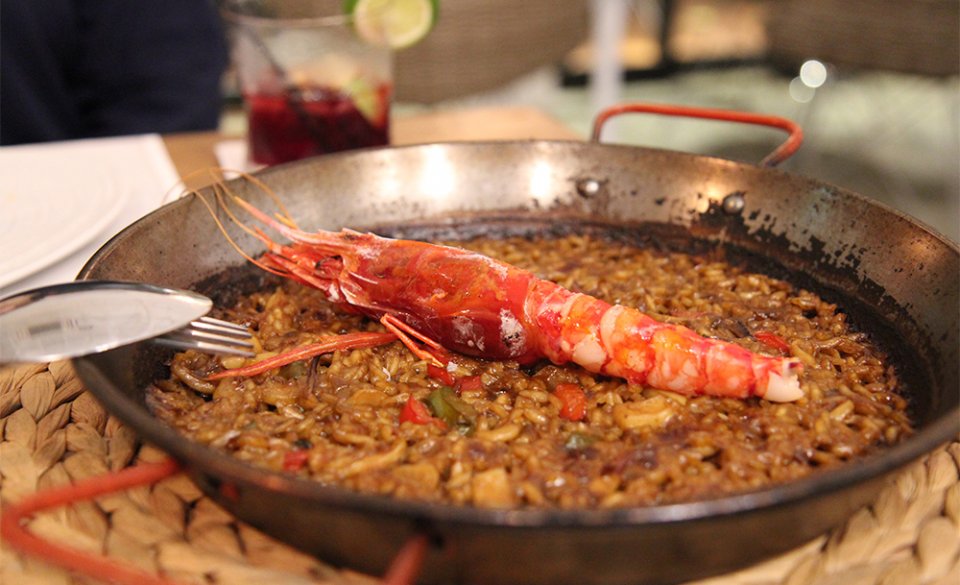
It’s not as hyped as some of the other recent openings, but foodies and industry professionals know that Michelin-starred Catalan chef Carles Gaig’s airy restaurant, set in a white heritage building on Dempsey, is a culinary triumph. Gaig’s daughter Nuria Gilbert runs the restaurant, while Eduard Castellarnau helms the kitchen. Try exciting tapas like the Atlantic cod fritters and the canelon, a cannelloni-style dish stuffed with foie gras, beef and pork in truffle cream. They also do a mean fideua—a Catalan noodle paella—and a crispy suckling pig. #01-01, 16A Dempsey Rd. Make a reservation via Chope here.
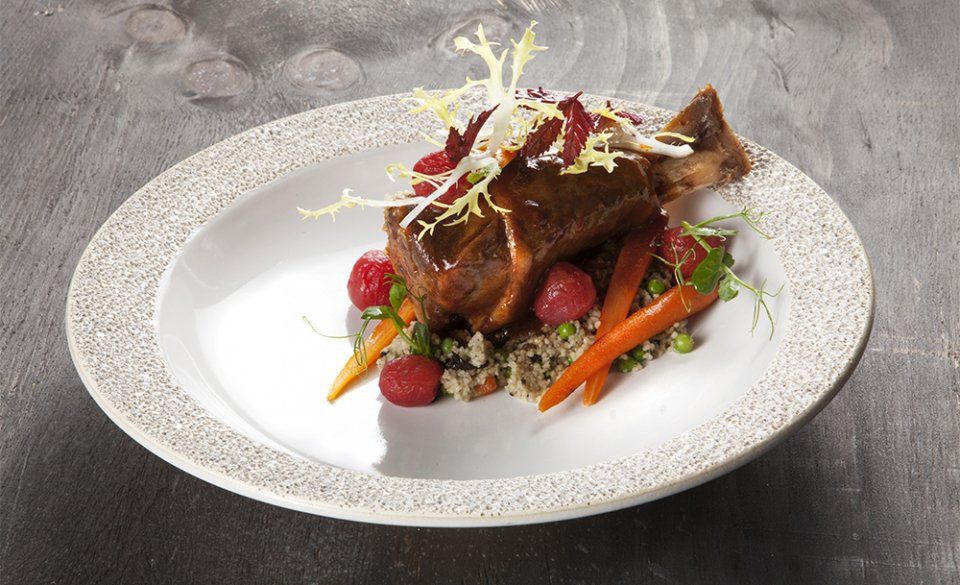
Bringing some trendiness to the lovely but staid Dempsey Hill, Spa Esprit’s Open Farm Community has chef Ryan Clift teaming up with urban farmers Edible Gardens City for this farm-to-table inspired concept. The expansive 3,250 sq m space has its own herb and vegetable garden, as well as an airy dining room serving hearty and fresh pastas, salads and meat dishes. Don’t skip the creamy rigatoni with local mushrooms, smoked pancetta, Stilton, balsamic reduction, as well as the braised lamb shank with homemade couscous. The place also encourages people to picnic in the garden while playing a game of lawn bowling or ping pong, too, and their monthly Social Market is now a weekend staple. 130 Minden Rd. Make a reservation via Chope here.
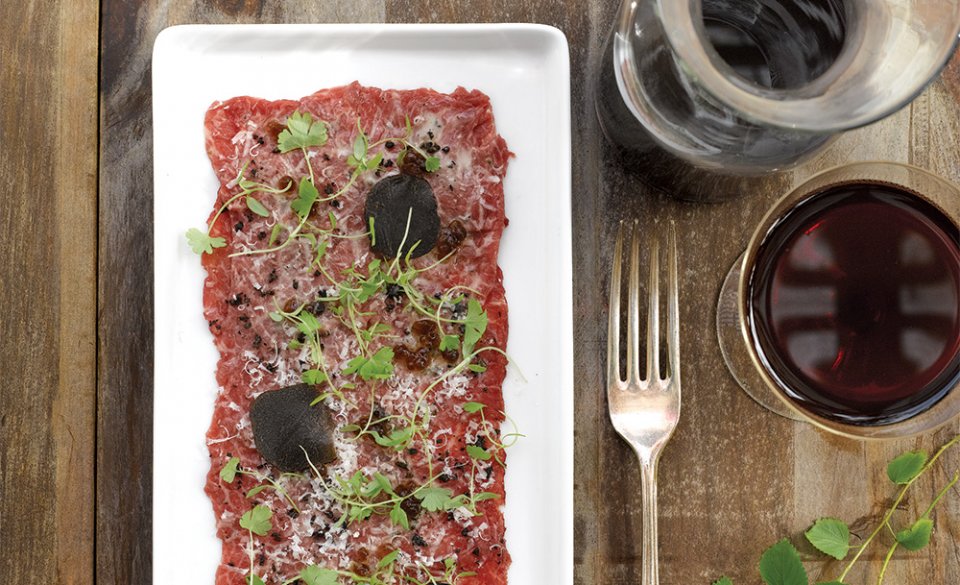
Destination dining spot for those special occasions, this high-ceilinged chapel-turned-date night hot spot churns out gloriously executed classics alongside amiable and competent service. Once you stop admiring the stained glass windows, white-washed space and tiled floors, the food is the focus. The dishes aren’t big on innovation, but rather on good ingredients prepared well. At dinner time, we’re fans of the Dover sole meuniere, a two-person affair filleted tableside. Or try their oft-changing, affordable set lunches, with items like the asparagus veloute with truffle and the 36-hour Brandt short ribs. 39C Harding Rd. Make a reservation via Chope here.

Inspired by the courtly Cantonese style dining of the Ming dynasty, the dining hall at Yan Ting, replete with stained glass panels, chandeliers and plush booths, is as luxurious it gets. The food is as pretty as the cushy beige chairs and purple tinted decor, so expect excellent Cantonese cuisine courtesy of Hong Kong-trained chef Tony Wun. Menu highlights include the prawn ball in pumpkin soup and the pan-fried scallop with corn and teriyaki sauce. The weekend dim sum brunch is always packed, so book ahead. 1/F The St Regis Singapore, 29 Tanglin Rd.
Advertisement